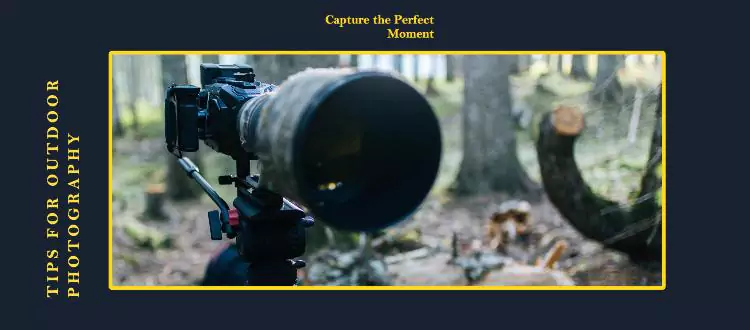Theodore Lowe, Ap #867-859
Sit Rd, Azusa New York
Find us here
Best Time of Photography Outside

Outdoor photography thrives on the quality of natural light, which varies throughout the day. Early mornings and late afternoons are prized by photographers for the golden quality and directionality of the light, often referred to as the golden hours. The low angle of the sun produces long shadows and diffused light, which can add depth, dimension, and warmth to photos.
Midday light tends to be harsh and can result in strong contrasts and squinting subjects, making it less than ideal for most photography styles. Overcast days bring their own advantages, providing a natural diffuser for sunlight and enabling vibrant colors to pop without overpowering highlights or deep shadows. Understanding these patterns allows photographers to plan shoots that take advantage of the best natural lighting conditions.
The Golden Hour Magic
The Golden Hour, known for its soft, warm light, transforms any outdoor photography session into a magical experience. This time of day provides an unbeatable natural backdrop for stunning images. Let's explore why this period is a photographer's dream and how to take full advantage of it.
Why Dawn And Dusk Are Key
The Golden Hour happens twice a day: just after sunrise and just before sunset. The sun is low in the sky, creating gentle light that reduces harsh shadows and enhances textures. This light brings out the beauty in landscapes and subjects, making them appear more inviting. The magic of this light doesn't last long. Photographers must be quick to capture the ethereal beauty of these moments.
Tips For Making The Most Of The Golden Hour
Preparation is the key to seizing the full potential of the Golden Hour. Here are tips to help:
-
Scout your location in advance. Find the perfect spot before the Golden Hour begins.
-
Use a Golden Hour calculator or app to know the exact timings in your area.
-
Arrive early. This gives you time to set up and be ready for the perfect light.
-
Understand your camera settings to quickly adjust to changing light conditions.
-
Experiment with angles. The direction of light can alter the mood of your photos dramatically.
-
Bring a tripod for stability, as the light can be dim, and you'll need longer exposure times.
-
Keep shooting. As the light changes, new opportunities for great photos happen.
Remember, the Golden Hour's beauty lies in its impermanence. Use these tips and create your magical photography moments outside.
Understanding Blue Hour
The Blue Hour is a magical time for photographers. This period offers a unique light that isn't found at any other time of day. It occurs just before sunrise and just after sunset. The sky takes on a rich blue tone that many photographers desire. The diffused light creates a balanced environment for stunning outdoor photography. Let's explore how to capture amazing shots during this special time.
Capturing Cool Tones
During Blue Hour, the sky's color palette shifts to beautiful cool hues. Here's how you can capture them:
-
Set your white balance to 'Tungsten' to enhance the blue.
-
Use a tripod to manage the low light and maintain sharp images.
-
Compose your shots with the sky as a prominent background.
Note the subtleties in shades from a deep midnight blue to a softer, lighter blue as time progresses.
Balancing Artificial And Natural Light
Blue Hour is the perfect time to mix artificial lights with natural twilight. Street lamps and building lights blend seamlessly with the dimming sky, offering:
|
Advantage |
Technique |
|---|---|
|
Soft Shadows |
Use longer exposures. |
|
Dynamic Scenes |
Combine different light sources. |
|
Visual Balance |
Adjust your aperture for depth of field. |
These techniques help create a harmonious blend between the cool blue sky and warm city lights.
The Midday Challenge
The Midday Challenge in outdoor photography is notorious among enthusiasts and professionals alike. Skies are bright and the sun is high, resulting in a light that can be too harsh for many subjects. Photographs taken under these conditions often suffer from overexposure, washed-out colors, and deep, unflattering shadows. Yet, midday light doesn't have to mean bad news for your photo shoot. With the right techniques, you can conquer these bright conditions and capture stunning images.
Working With Harsh Shadows
Strong sunlight creates hard, dark shadows that can ruin a great shot. To tackle this, photographers must think creatively. Here are some effective strategies:
-
Find Open Shade: Position your subject under the cover of a large tree or building to soften shadows.
-
Time It Right: Wait for passing clouds to momentarily diffuse the harsh sunlight.
-
Adjust Angles: Experiment with your subject's orientation to the sun to change how shadows fall.
Using Reflectors And Diffusers
Reflectors and diffusers are crucial tools when shooting in the midday sun. Reflectors bounce light onto your subject, filling in shadows. Diffusers, on the other hand, soften the sunlight's intensity. Here’s how to use them effectively:
|
Tool |
Use |
Effect |
|---|---|---|
|
Reflector |
Position opposite the sun to reflect light |
Brightens shadows |
|
Diffuser |
Hold between the sun and subject |
Creates softer light |
For best results, have an assistant help with positioning. Solo photographers can use stands to hold the equipment. Remember to adjust the distance of the reflector or diffuser from the subject to fine-tune the lighting.
Seasonal Considerations
Choosing the perfect moment for outdoor photography is an art. Each season paints the world with its unique palette of light and color. Understanding these seasonal differences is crucial for capturing striking images.
The Impact Of Weather On Lighting
Weather patterns play a significant role in the quality of natural light. Bright sunshine creates high contrast scenes, while overcast skies diffuse light for softer tones. Photographers need to be adept at using the available light to their advantage.
-
Summer: Long days with harsh light; early mornings or late afternoons are best.
-
Winter: Short days with a lower sun angle, offering longer shadows and a softer glow.
-
Stormy weather: Can produce dramatic lighting conditions with vibrant skies.
Photographing Fall Foliage And Spring Blossoms
Fall and Spring are treasures for photographers seeking vivid colors.
Fall's foliage blankets landscapes in warm hues. Timing is crucial as leaves change fast. Peak colors vary by region, so local research helps.
|
Region |
Peak Fall Colors |
|---|---|
|
Northeast US |
Early to Mid October |
|
Midwest US |
Mid to Late October |
|
Mountainous Areas |
Early October |
Spring brings new life, with blossoms creating natural backdrops. Timing for spring photography depends on local climate patterns. Capturing the fresh bloom requires careful planning.
-
Track blooming forecasts in your area for the best timing.
-
Focus on early morning shoots to capture dew on petals.
-
Use gentle, diffuse morning light for the most pleasing shot.
The Night Photography Thrill
Photography at night unlocks a world of wonder. Under the dark skies, stars twinkle, and cities glow. Night photography, full of challenges and excitement, rewards with stunning images. The thrill comes with capturing light in its most elusive form. Let's dive into the enchanting realm of nocturnal photography.
Long Exposure Techniques
To master night photography, you need the right strategies. Long exposure stands out. It allows cameras to absorb light over time, making dark scenes come alive. Here are key steps:
-
Stable Tripod: Ensure your camera stays still.
-
Manual Mode: Take control over exposure settings.
-
Low ISO: Avoid noise by keeping ISO low.
-
Remote Shutter: Prevent shake with a remote.
Chasing The Aurora Borealis And Milky Way
Hunting the Aurora Borealis, nature’s light show, is magical. The same goes for photographing the Milky Way. Both require clear, dark skies and a bit of planning. Here's a short guide:
|
Aurora Borealis |
Milky Way |
|---|---|
|
Check solar activity forecasts |
Find a dark location |
|
Use a wide-angle lens |
Use a star tracker for sharp stars |
|
Monitor the weather |
Plan around the moon phases |
Weather Patterns And Their Effects
Photographers know that weather patterns play a crucial role in outdoor photography. Skies, clouds, and storms can add drama and beauty to photographs. Understanding their effects can help capture breathtaking images.
Cloud Dynamics And Sunsets
Clouds transform the sky into a canvas at sunset. They catch colors that the naked eye cannot see. Here are tips for catching amazing cloud dynamics:
-
Golden Hour: Just before sunset, light is soft and warm.
-
Blue Hour: After sunset, the sky gets a deep blue hue.
-
Cloud Types: Identify clouds like cumulus or cirrus to predict vibrant sunsets.
These are times when clouds become vivid and dramatic. Wide-angle lenses work best to capture the expanse of the sky.
Capturing Stormy Skies
Storms bring excitement and a wild element to photographs. Stormy skies can be safe and extraordinary subjects if you plan right. Here's what to consider:
-
Safety First: Keep a safe distance from the storm.
-
Camera Protection: Use weatherproof gear or covers to protect your camera.
-
Lightning Trigger: These devices capture lightning as it happens.
Use a tripod and slow shutter speed for smooth shots. Fast shutter speeds freeze the raindrops. Both techniques create unique, memorable photos.
Conclusion
Capturing the perfect shot requires timing and light. Golden hours, blue hours, and overcast days offer unique beauty. Plan your outdoor photography sessions around these conditions to create stunning images. Remember, nature's unpredictability can also gift unexpected moments. Keep your camera ready!
Related blog posts
26 Tips for Outstanding Wedding Photography
Dive into this article to learn tips for capturing wonderful wedding memories through photography.


